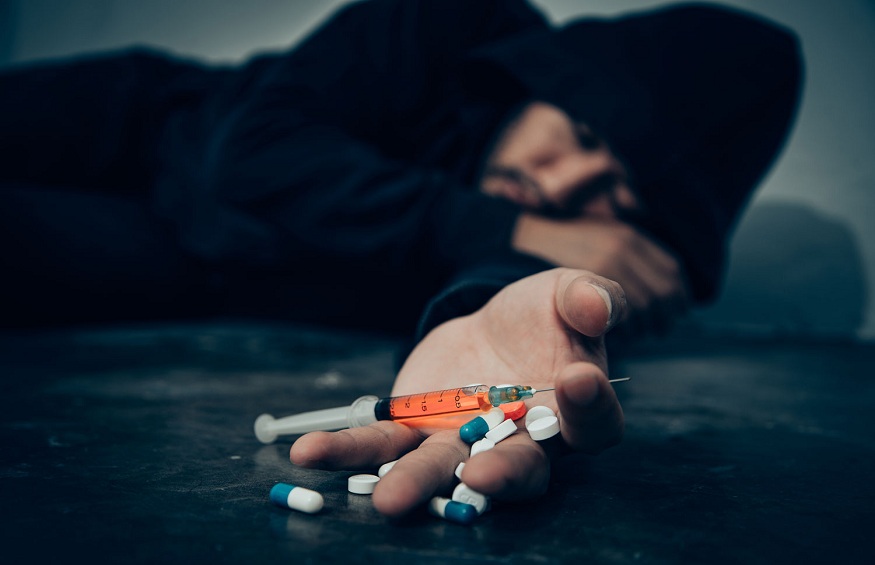explains what you can do to improve your health or what professionals can offer you during a consultation. Good reading !
What is it about ?
Addiction to substances such as alcohol, sleeping pills and painkillers, painkillers and drugs is a common problem that sometimes goes unnoticed for a long time.
Sometimes those around you notice changes in the person’s behavior. The problem may be revealed during an overdose or the diagnosis of another illness, such as hepatitis or HIV infection . If the person uses drugs by injection into a vein (intravenously), they are exposed to the risk of contamination by all kinds of bacteria and viruses, among other things when they use “dirty” non-sterile needles.
At the beginning, the consumer thinks that he always has his consumption under control, but this can change quickly. Those around him may be the first to point out that there is a problem: because his behavior is changing, he no longer fulfills his social obligations (school, work, family) and he spends too much time looking for and to consume the substances.
How to recognize it?
Drug addiction is often revealed by the simultaneous appearance of other physical illnesses or psychological disorders.
Physical ailments
Various forms of hepatitis (especially C and B) are common among intravenous drug users. During the acute phase, yellow discoloration of the eyes and skin (jaundice) may appear, accompanied by loss of appetite and weight loss.
Infections generally occur at the injection sites, therefore in the folds of the elbow, on the hands and on the feet. They can range from local infection, with redness and swelling, to abscess formation or even blood contamination with inflammation of the inner lining of the heart ( endocarditis ).
An overdose results in signs of damage to the nervous system, with damage to muscles and nerves. These problems can manifest as decreased strength, unsteady gait and symptoms of paralysis.
Specific signs: cannabis users often have red eyes and mucous membranes in the mouth; opiate (opioid) users have very small pupils, almost like a small dot; and amphetamine users (speed, ecstasy, etc.) are often hyperactive and have a racing heart.
In drug-dependent pregnant women, it is important to take into account the risks for the child, during pregnancy and after delivery .
Psychic disorders
Drug use also often goes hand in hand with excessive alcohol consumption . This can all be accompanied by personality disorders, mood disorders (eg depression) and anxiety, for example.
Chronic psychiatric disorders such as schizophrenia are more common among drug users than among others. Psychoses are also more frequent, especially delusions of persecution and hallucinations. Which means that people perceive things that don’t exist.
Drug use also leads to sleep disturbances, which lead to the use of sleeping pills and painkillers . In turn, these can lead to addiction.
What tests will the doctor perform?
The doctor will always carry out a series of examinations to draw up a correct picture of the state of health of the consumer. He will do a blood test to check liver function and the possible presence of hepatitis or HIV infection . A urinalysis may be done to identify the types of drugs that have been taken.
What treatment will the doctor put in place?
It is of course essential to stop drug use. This cessation can sometimes be achieved with the support of drugs that decrease withdrawal symptoms (withdrawal therapy). But this is usually not enough for users of opiates (such as heroin), for whom the doctor can temporarily prescribe substitute products (substitution therapy).
Stopping drug use leads to unpleasant withdrawal symptoms, which are more or less controllable with medication. Medications that are addictive and addictive, such as painkillers and sleeping pills (eg benzodiazepines) , should be avoided. However, they may be needed to treat extreme restlessness and insomnia. That is why the doctor will then opt for a short-acting drug and a short treatment period of 3-5 days.
Severe psychoses and anxiety are treated with an antipsychotic. In case of depression, the doctor will prescribe an antidepressant. A fast heartbeat from amphetamines is sometimes temporarily treated with a medicine that slows the heartbeat.
Withdrawal treatment generally lasts between 2 and 4 weeks. It depends on the seriousness of the problem, psychological distress or other simultaneous conditions, age (minors are sometimes hospitalized under duress), legal factors and the wishes of the persons concerned.
Substitution treatment
This type of treatment is mainly used for addiction to opiates (especially heroin) or when withdrawal from other drugs fails with usual treatment.
When it is impossible to stop drug use suddenly, a substitute product is given temporarily. The objective is to break away from drug use by consuming another, less addictive product. It is actually a combination of withdrawal treatment and substitution treatment. The most widely used substitution products are buprenorphine and methadone. After a while, these products can also be gradually reduced until they are stopped.
Substitution treatment is prescribed by a doctor with specific skills in this area. The substitute product is delivered by a fixed pharmacist.





